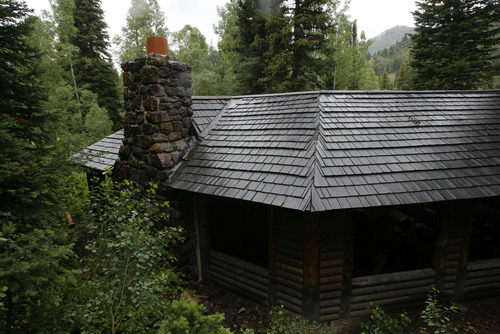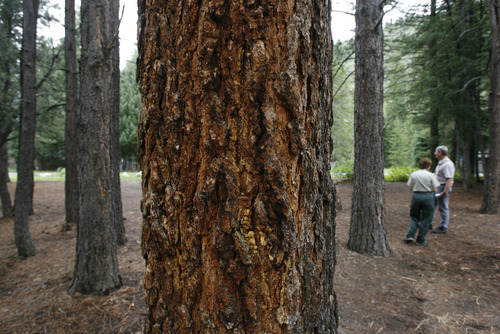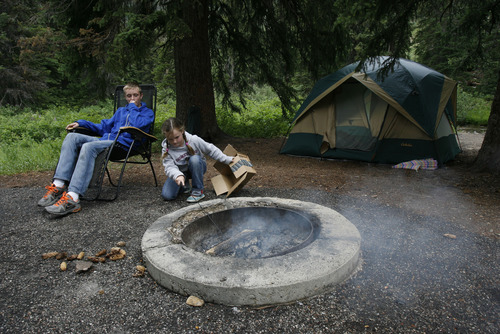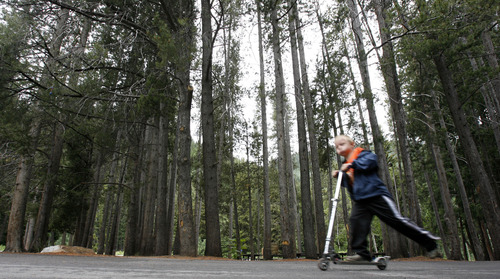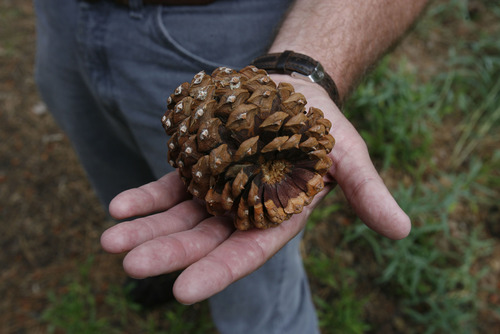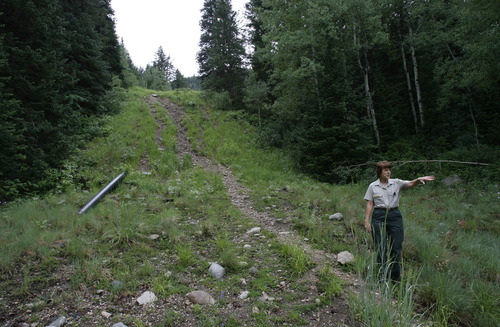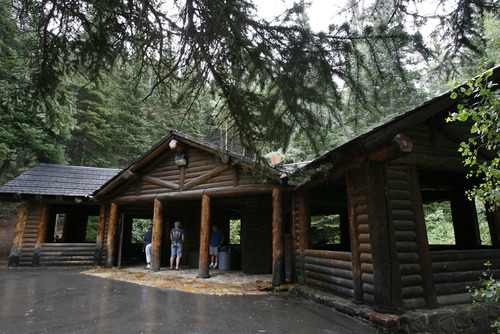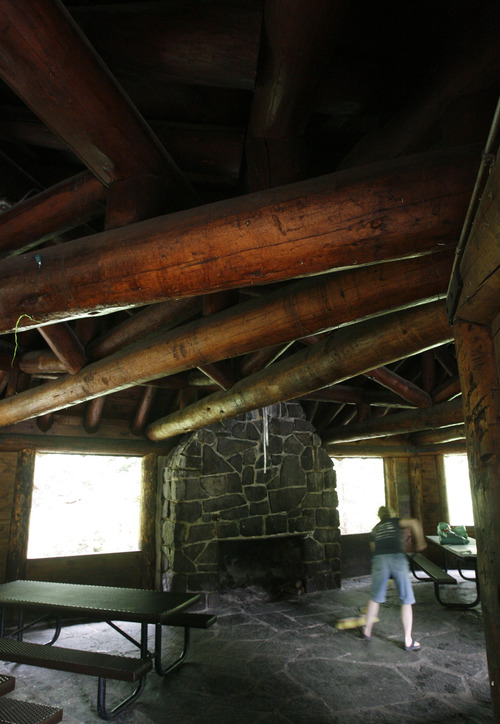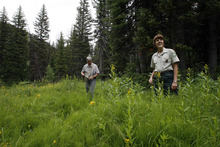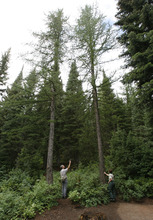This is an archived article that was published on sltrib.com in 2013, and information in the article may be outdated. It is provided only for personal research purposes and may not be reprinted.
Big Cottonwood Canyon • Don't tell Utah's anti-Washington politicians, but one of the state's most popular campgrounds, the Wasatch canyons' fertile forests and Salt Lake City's water lifelines all exist today, thanks to ... the federal government.
Yes, back in the early 1900s, the city's leaders and Utah's U.S. senators looked at the decimated canyons east of the Salt Lake Valley and turned to Uncle Sam for help — a move that paid off in groves.
Perhaps the most visible reminder of that outreach: the Spruces.
The first campground established in the Wasatch remains one of its most frequented, with nearly 100 overnight sites filling up practically every summer weekend. Chances are, though, that few of the thousands who camp, ski and picnic there each year know its history or the role it played in helping turn the Wasatch — once devastated by clear-cutting, mining and overgrazing — into the lush forests that today provide recreation and water to a mushrooming urban area.
From 1905 until about 1921, the Big Cottonwood Canyon spot where the Spruces campground is located served as a tree nursery, where millions of saplings sprouted in an effort to reforest the Wasatch. Then, using tents supplied by the Utah National Guard, it became a popular community camp, one of the first U.S. Forest Service recreation facilities. In the 1930s, the Civilian Conservation Corps added a shelter that is still in use, built a ski jump and constructed a toboggan run and amphitheater. Some even remember an ice-skating rink.
Carol Majeske, recreation staff officer for the Uinta-Wasatch-Cache National Forest, and Wayne Padgett, an ecologist with the Bureau of Land Management, have done extensive research. They are putting together new interpretive signs to tell the story about how city and state leaders joined with a new federal agency called the U.S. Forest Service in the early 1900s to restore the watersheds and reforest the canyons.
"When the pioneers came into the valley, they needed resources," explained Majeske as she sat inside the historic CCC shelter. "They went to the canyons for trees, mining and grazing. At the time, people didn't realize trees were needed to retain the soil. This was the story of all the national forests. ... Trees were cut down everywhere, and there were lumber mills up in these canyons."
In 1891, Congress passed a law allowing the president to create forest reserves to protect watersheds. Majeske found a 1902 diary by Albert Potter, who would become the assistant chief of the U.S. Forest Service. He traveled throughout northern Utah's canyons to examine the damage done by mining, timber harvesting and grazing. This is what he wrote after seeing Alta for the first time:
"The stumps show it to have been well forested originally but every tree (and seedling) has been cut. It certainly is a picture of a forest destruction and I do not wonder that the town was once destroyed by a snowslide coming down the denuded mountain side. ... It would be hard to find a seedling big enough to make a club to kill a snake."
According to Majeske's research, President Theodore Roosevelt established the Salt Lake Forest Reserve in 1904. The next year, legendary conservationist Gifford Pinchot, the first chief of the U.S. Forest Service, toured Big Cottonwood Canyon with Utah's U.S. Sen. Reed Smoot and some tree-planting experts.
"Your city can have a superb water supply from the Big Cottonwood, but the watershed must be covered with trees, and the greatest care must be used to protect the stream from pollution from the ranches, camps and mines in the canyon," Pinchot was quoted as saying in a September 1905 Salt Lake Herald story that announced the Spruces as the site for the new nursery. "I am ready and anxious to do all I can to assist Salt Lake in this matter because I realize there is no higher use to which water can be put than in supplying cities."
Majeske said that, in 1905, Salt Lake City and the U.S. Forest Service agreed to work together to preserve the watershed, a deal that exists to this day. The city improves and taps the water while the Forest Service tends to the land.
The tree nursery opened in 1905 on five acres. It helped produce millions of seedlings, including Utah red pine, Engelmann spruce, Douglas fir, Western yellow pine, ponderosa pine, lodgepole pine and larch, the only conifer that loses its needles. These were planted throughout the Wasatch canyons.
"The majority of the trees were native," Padgett said. "There are certain areas that were planted that are still evident today. ... They tell how this canyon was used and abused, so to speak, and how it has recovered. You can walk out here and know what is going on and the miraculous recovery for this area."
As the nursery wound down its operations, the Forest Service joined with state leaders to use the site to build a community camp.
"Under the cooperative efforts of the Forest Service, the state and the county, ideal camping facilities are to be offered at one of the most beautiful spots in Cottonwood Canyon," said a 1920 Salt Lake Telegram article. "On the site of the abandoned nursery of the Wasatch Forest, tents and cots, furnished by the state from the equipment of the Utah National Guard, will be installed. These are offered for the use of the public without charge, bringing the cost of a canyon vacation within the reach of the average purse."
Utahns have been flocking to the Spruces ever since.
Touted as the Salt Lake Ranger District's "most modern campground," the Spruces sports ball fields, volleyball courts, flush toilets, a web of popular trails and more.
But visitors can still set foot in the CCC shelter, with its classic stone fireplace, and step back in time.
Twitter @tribtomwharton




